Dicliptera squarrosa
We often judge living things based on how they look and the company that they keep. Case in point: the hummingbird plant.
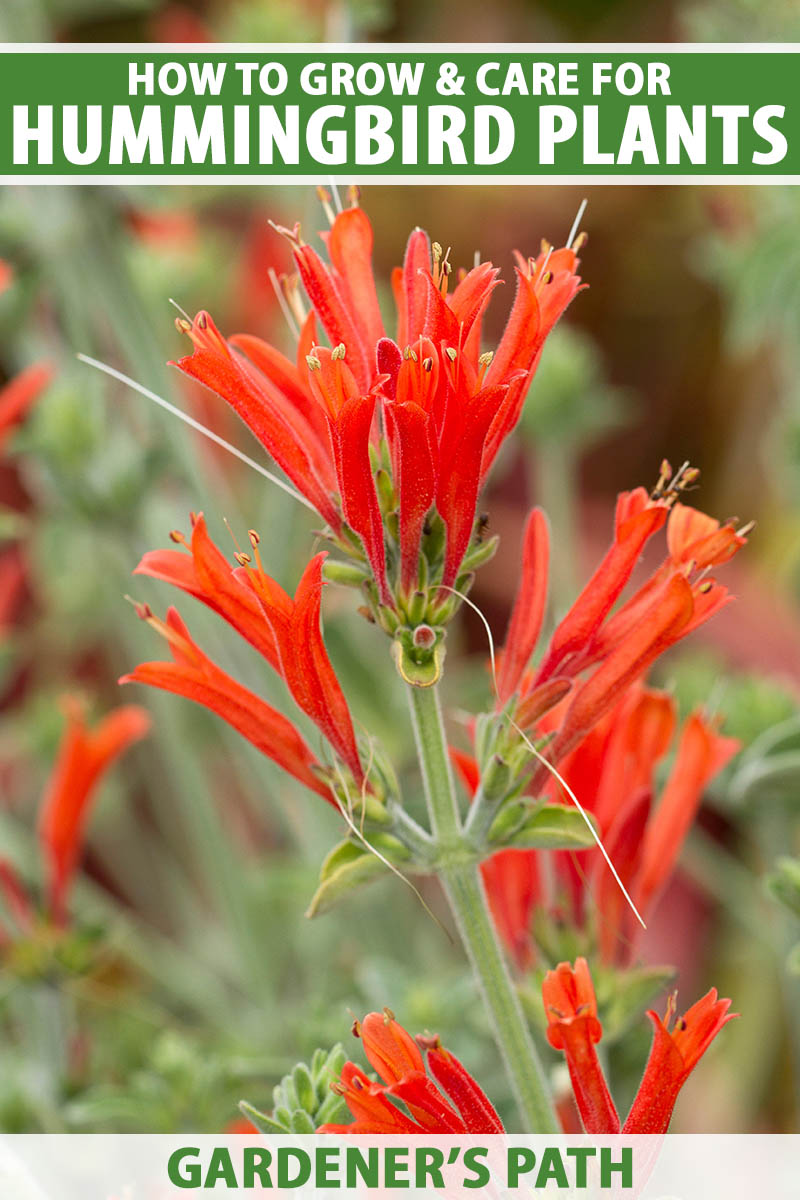
We link to vendors to help you find relevant products. If you buy from one of our links, we may earn a commission.
If you’re a cruelly handsome, athletic-looking dude with a posse of letterman-jacket-sporting jocks in a ‘90s movie, I’ll bet you’re also the film’s school bully.
If you’re a disheveled, manaically-cackling old woman with a pet feline count in the double-digits, I’m guessing that you’re a crazy cat lady, or maybe a witch.
But if you’re a brightly-flowering and lushly-leaved perennial that attracts hungry hummingbirds, I’ll assume that you’re worthy of a spot in the garden.
Dicliptera squarrosa is definitely worthy: on top of its ornamental beauty and attractiveness to pollinators, it’s resilient against heat, humidity, and drought, and can also survive in subfreezing temperatures.
And on top of all that, no pests or pathogens are known to pose serious health risks to this plant!
If all this has you raising an eyebrow, your skepticism is totally understandable. But believe me – D. squarrosa is the real deal. And after reading this guide, you’ll be able to see for yourself.
Here’s what we’ll go over:
What You’ll Learn
What Are Hummingbird Plants?
Hummingbird plants are herbaceous perennials that belong to the acanthus family, Acanthaceae, alongside other stunning bloomers such as bear’s-breech (Acanthus mollis) and shrimp plant (Justicia brandegeeana).
Originating from central South America and hardy in USDA Zones 7 through 11, Dicliptera squarrosa has gone through many a name change: Dicliptera suberecta, Jacobinia suberecta, and Justicia suberecta were all former monikers.
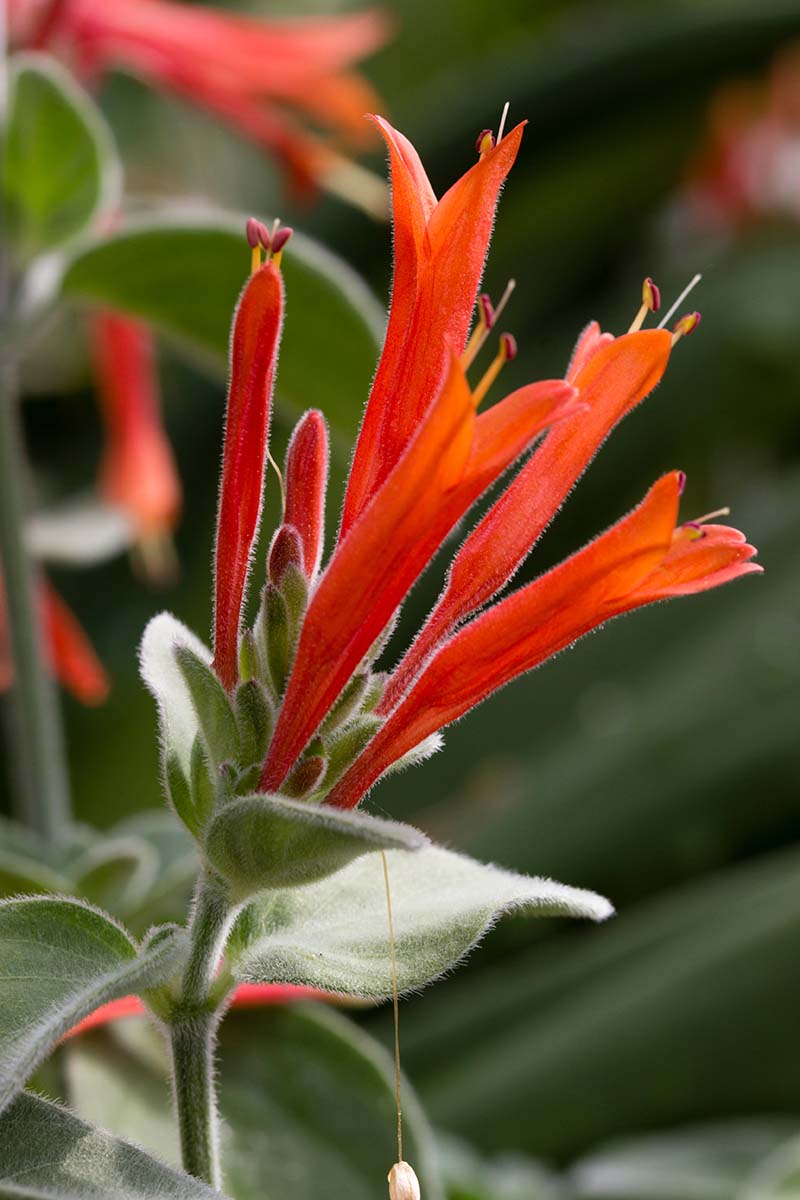
Besides “hummingbird plant,” D. squarrosa wields the common name “firecracker plant,” in reference to its fiery-colored, terminal clusters of blooms.
Said blooms are reddish-orange, two-lipped, and tubular in shape.
Emerging in summer to fall, these flowers are the money-makers, so to speak – along with being the visual focal point, they provide copious amounts of delicious nectar for hummingbirds, who pollinate the plants as they move from flower to flower.
As a source of nectar, hummingbird plants help maintain healthy populations of hummingbirds, who in turn aid in D. squarrosa reproduction.
It’s a beautifully codependent relationship, as oxymoronic as that may sound.
After pollination, the flowers give way to capsuled fruits, which eventually produce tiny reddish-black seeds.
The fruits have two wing-like divisions, which explains the genus name Dicliptera, a union of the Greek words diklis (twice-folded) and pteron (wing).
Grayish-green, velvety shoots coated with thin hairs support the flowers. The oval-shaped leaves are oppositely arranged, alternating in direction at each node.
This allows for otherwise empty spaces to fill in with foliage, which adds to the plant’s mounded appearance.
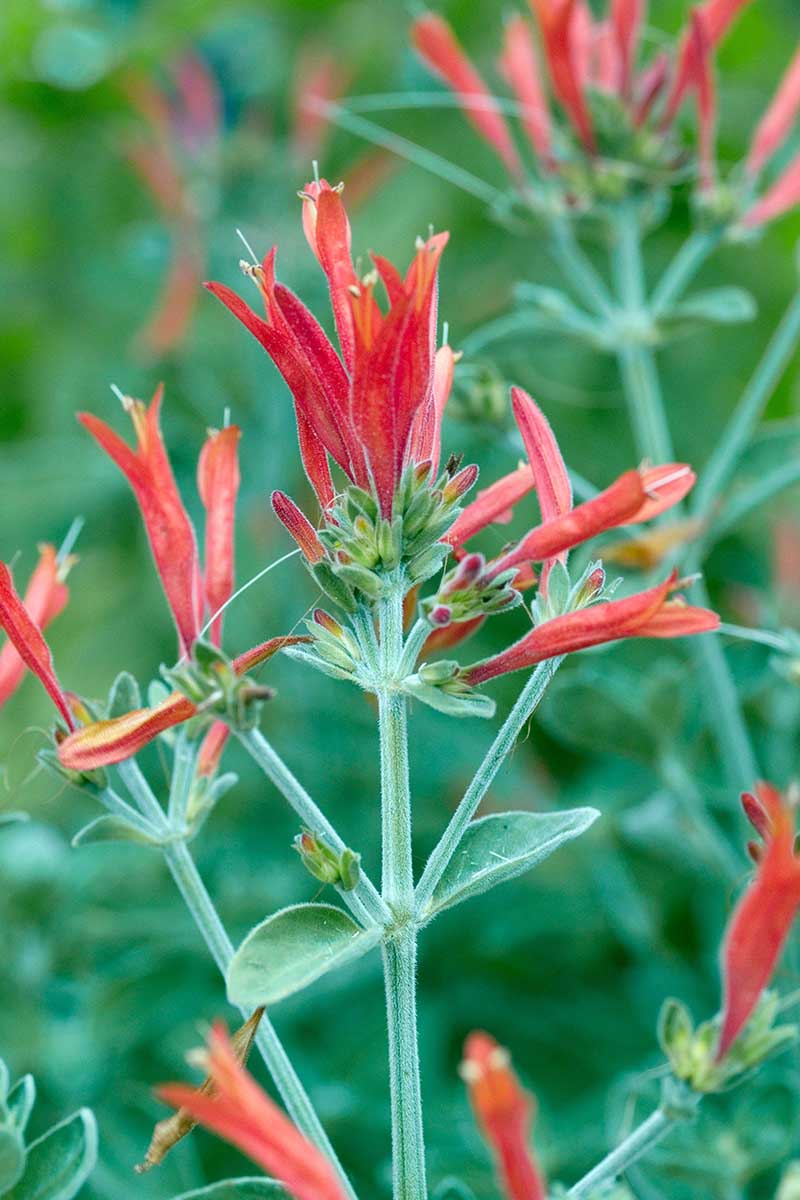
This mounded, clumping form tends to have a minimum height and spread of 18 inches, but specimens can reach a maximum size of two feet tall and three feet wide.
D. squarrosa also spreads pretty easily via its fibrous root system – I’ve heard stories of its almost weed-like behavior.
Given its glamorous looks, the plant is valued for its aesthetics and ability to attract pretty hummingbirds, which can make any landscape feel like even more of a living, breathing ecosystem.
Propagation
Now that you know how cool D. squarrosa is, it’s only natural to want some, ASAP.
The best ways to acquire more are by taking cuttings from mature plants, or transplanting newly purchased starts or potted specimens from the nursery.
From Cuttings
In late spring, take cuttings four to six inches in length from the terminal ends of shoots, using a sterilized blade.
Defoliate the bottom half of each cutting, then dip the leafless end of each cutting in rooting hormone.
If you’re in need of some, Bontone II Rooting Powder from Bonide and available via Arbico Organics is a wonderful product.
Bonide Bontone II Rooting Powder
Stick the defoliated, hormone-coated ends into containers filled with a 50:50 mix of peat moss and perlite. Moisten the media, and keep the containers in indirect light next to a sunny window.
Provide humidity by draping a clear plastic bag over the cuttings. Make sure the cuttings don’t touch the sides of the bag, if possible.
Keep the media moist, and periodically uncover the cuttings to check for mold and wilt, as well as to provide fresh air.
Root formation should occur in three to four weeks. After that, you’ll need to repot the cuttings into larger containers and cover them with larger bags as they continue to grow and develop.
Come spring, the cuttings should be ready for hardening off.
After your first predicted frost-free date in spring, leave the rooted cuttings outside for 30 to 60 minutes before bringing them back inside.
Each following day, leave the containers outside for an additional half to a full hour prior to bringing them inside.
Once the cuttings can withstand a full day’s exposure, they’ll be ready for transplanting!
Via Transplanting
Once you have ready-to-transplant hummingbird plants, the next step is moving them into their forever homes.
For in-ground transplants, choose a site that’s situated in full sun or partial shade, with well-draining soil and a moderate pH of 6.0 to 8.0.
Prepare holes – spaced at least far enough apart to accommodate the transplant’s anticipated spread – that are about as deep as and slightly wider than the root system.
Lower the transplants in, backfill with soil, water in the transplants, and add additional soil as needed.
After transplanting, feel free to add an inch or two of mulch to the root zone. Keep the soil around the transplants moist as they grow and develop.
For container transplants, select containers at least two inches wider than the root mass for repotting.
With a hanging basket or two, your container-grown plantings aren’t confined to the ground.
If you go this route, make sure to select a well-draining basket that’s made of lightweight and weather-resistant material such as fiberglass or plastic.
How to Grow Firecracker Plants
As a reader of Gardener’s Path, you clearly want what’s best for your plants – and while D. squarrosa can tolerate less-than-ideal conditions in some ways, optimal care will yield optimal growth.
Climate and Exposure Needs
Within USDA Hardiness Zones 7 to 10, D. squarrosa can be grown outdoors year-round.
To ensure survival in colder climates, it’ll need to be protected from the cold or brought into a warmer location for the winter.
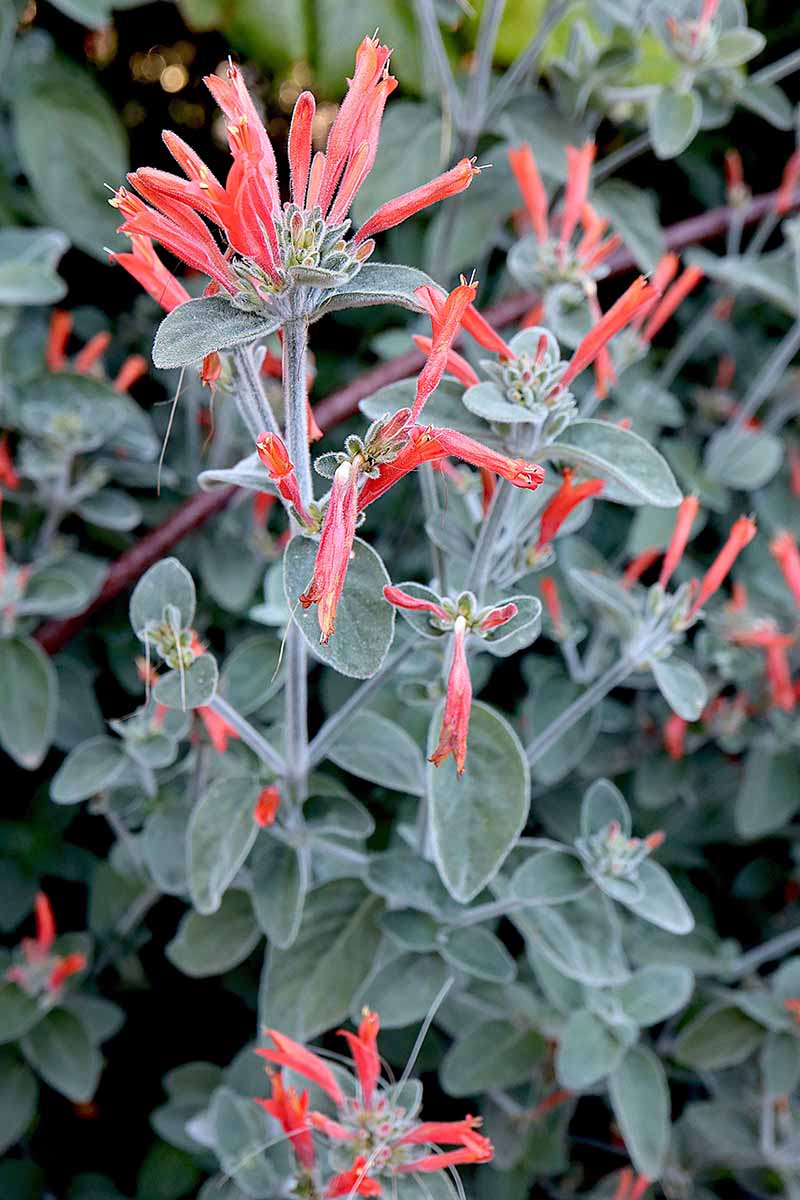
Cold protection via thermal coverings will add a bit of warmth, but using it is only advisable if your climate is right on the edge of the hardiness range, or if you’re experiencing a brief, unusual dip in temperature.
If either is the case, then a lightweight, yet durable dark green plant blanket, aka the Planket® (get it?), is available on Amazon.

If thermal coverings won’t cut it – or you simply don’t want to chance it – then you should bring your potted plants inside if temperatures are predicted to drop below 32°F.
Care for them in a garage or basement, and never let their soil become completely dry.
You can then bring them back out again in spring, but definitely not before temperatures routinely stay above freezing.
To protect pots from cracking in freezing temperatures, ensure that they can drain well, and prop them on top of bricks or cinder blocks.
The former ensures that no freezable water can collect and expand at the bottom, while the latter will prevent freezing rain from adhering to and damaging the bottoms of pots.
Partial shade exposure is acceptable, but for those gorgeous, hummingbird-attracting flowers to really bloom at their peak, D. squarrosa needs full sun.
Don’t fret over high humidity and heat levels – temperatures over 100°F are tolerable!
Soil Needs
“Well-draining” is the only quality that a hummingbird plant truly needs from its growing medium.
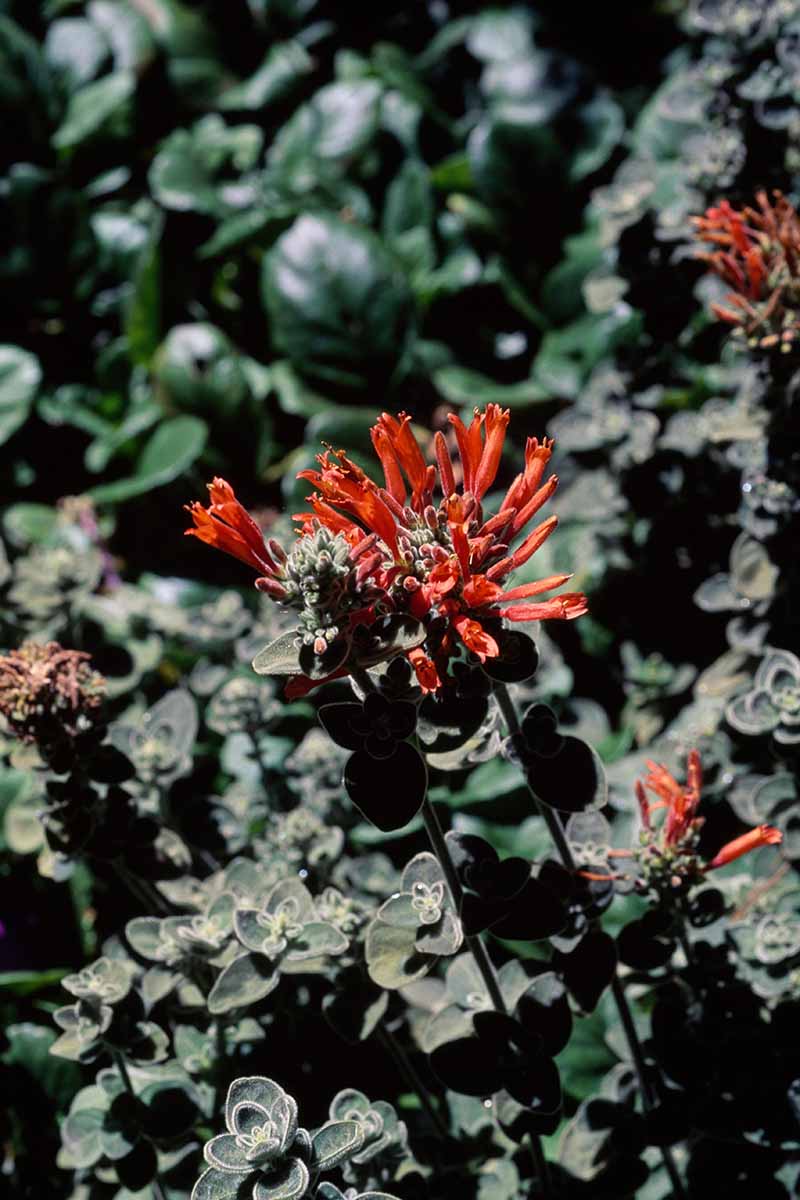
I recommend a loamy or sandy soil composition, or a 50:50 mix of peat moss and perlite, if you go with a soilless potting medium instead.
D. squarrosa tolerates a variety of pH levels, so a middle-of-the-road range of 6.0 to 8.0 works just fine.
Irrigation and Fertilization Needs
A hummingbird plant prefers to grow in moist soil, but its drought tolerance allows mature specimens to survive in conditions that are more dry.
You should aim to water whenever the surface of the soil feels dry, but if you’re late on irrigation, your D. squarrosa isn’t in immediate danger.
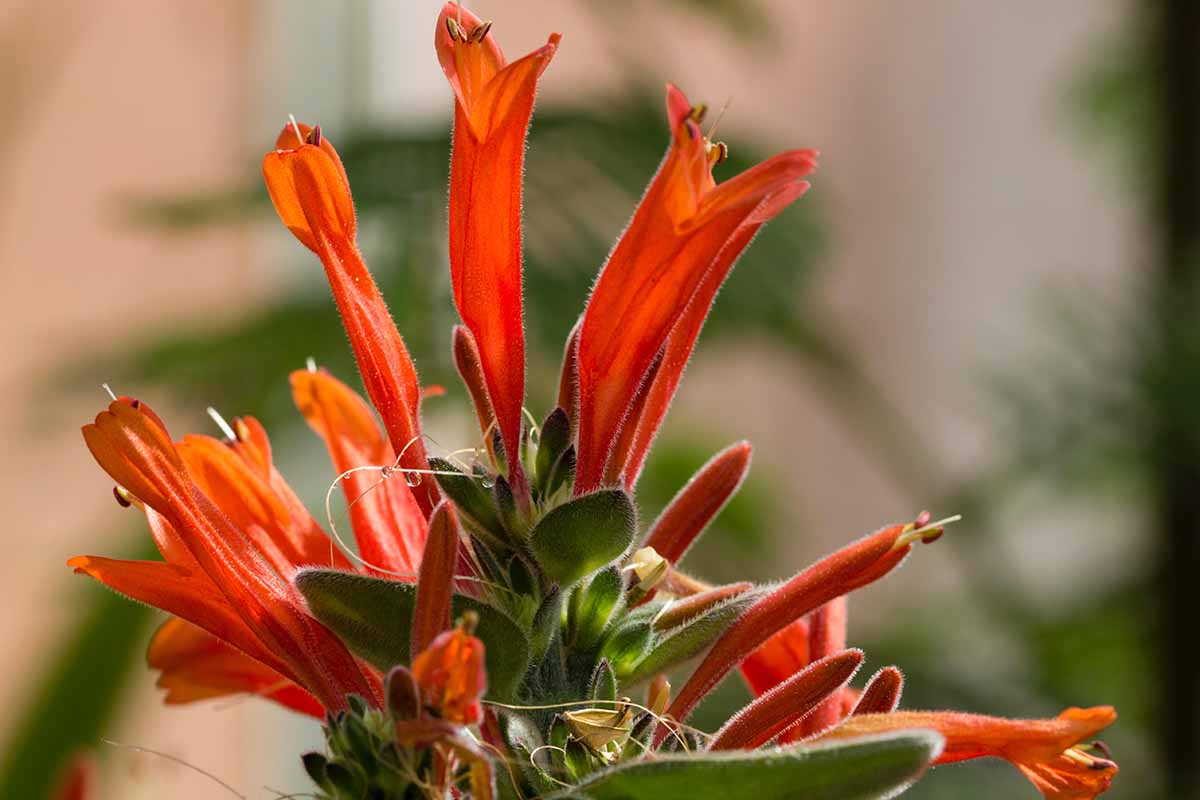
Fun fact: fine hairs like those found on the stems of this species retain water better than a hairless surface, so avoid overhead irrigation for the sake of keeping shoot surfaces sanitary.
A decent level of fertility is a plus as well, so make sure to amend the soil each spring with a couple inches of compost or well-rotted manure.
Growing Tips
- Full sun is optimal, but partial shade is tolerable.
- Make sure the growing medium is well-draining.
- Ideally, irrigate whenever the soil surface is dry.
Pruning and Maintenance
Feel free to deadhead by cutting back the blooms after flowering to prevent legginess.
Additionally, cutting down the plant all the way to the ground in late fall can encourage vigorous regrowth the following spring.
Maintaining an inch or two of mulch around the plant will keep it protected in cold weather, and help to prevent weeds.
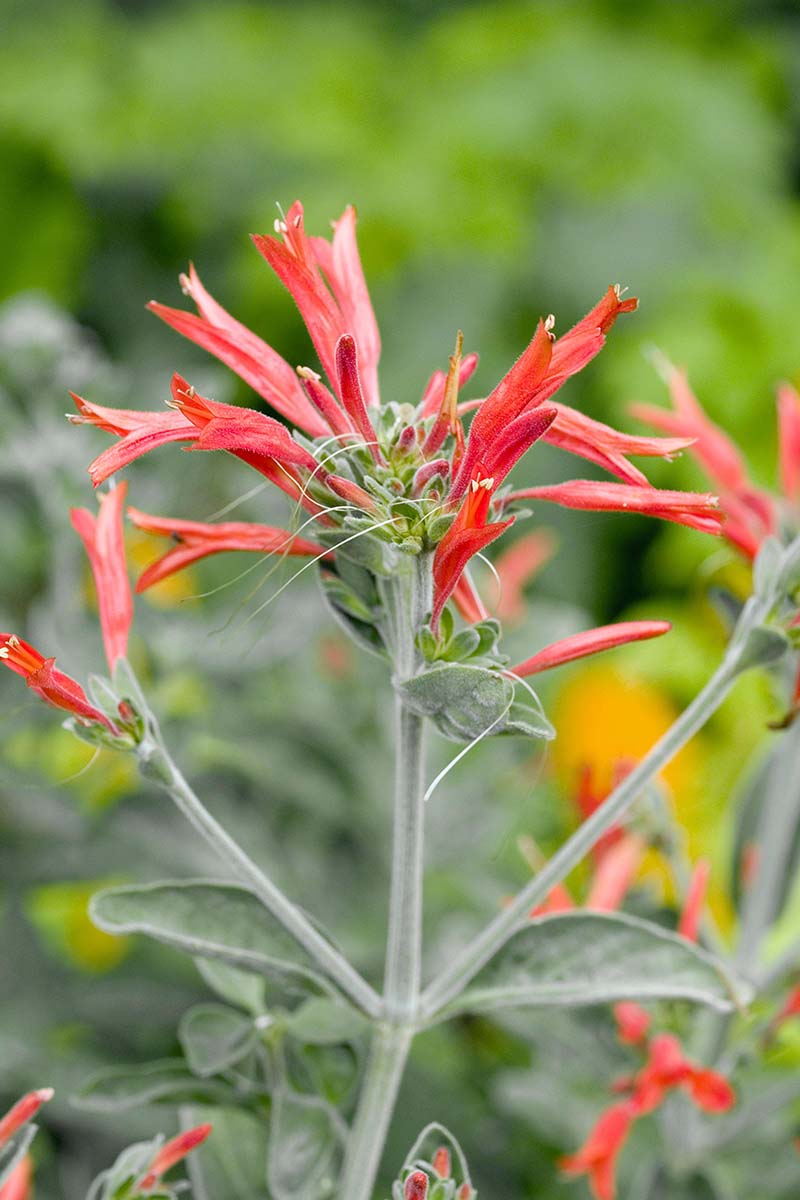
Any specimens cultivated in containers or hanging baskets will probably need to be divided and/or repotted as they grow.
At the beginning of each spring, check your D. squarrosa for drooping leaves, defoliation, reduced growth, dead growth in the center, and/or roots emerging from drainage holes.
All are signs that it’s time to divide or size up the container.
To divide, remove the plant from its container and cut it apart in two to four equally-sized sections with a sterilized blade.
From there, the daughter plants can be put into new containers, given away, or even composted if you don’t have a use for them.
Where to Buy Hummingbird Plants
Tragically, D. squarrosa can be tough to track down. In my experience, you can find a hosta or heuchera pretty much anywhere flora is sold, but a hummingbird plant? Not so much.
First and foremost: you aren’t likely to find this plant in physical nurseries and gardening centers beyond its hardiness range.
Odds are, a nursery in Louisiana or Alabama is more likely to have D. squarrosa in stock than one located in North Dakota, for example. And that’s for good reason – it won’t do well there.
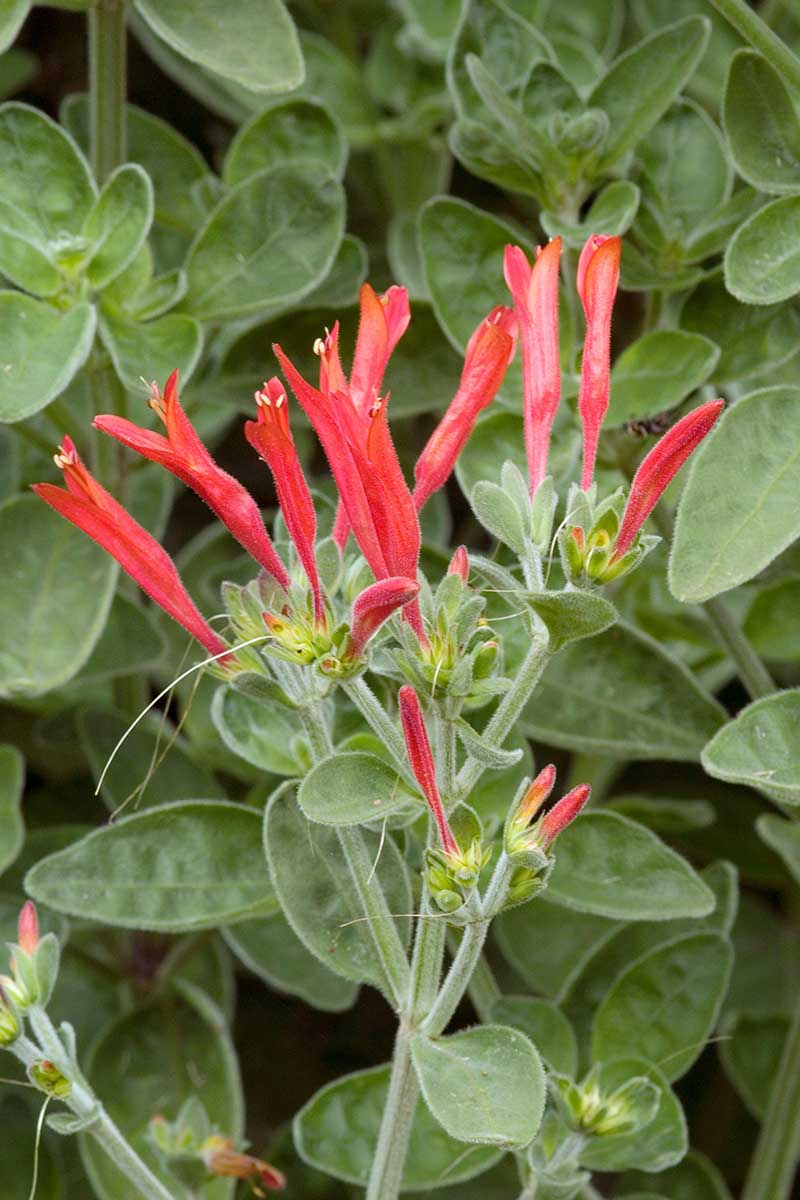
But thanks to online shopping, geography is no longer the obstacle it used to be.
Just keep the weather forecast in mind, and try to avoid scheduling shipments for periods of extreme heat or cold. Be on the lookout for reputable vendors who sell high-quality plants.
Don’t forget to utilize your fellow green thumbs. Attend local plant swaps and horticultural shows, and hit up your network of gardening buddies for any D. squarrosa they can spare.
Heck, it spreads easily enough that they may be more than willing to give some away.
Managing Pests and Disease
Thankfully, D. squarrosa doesn’t suffer from any serious pests or diseases. In fact, it’s even resistant to rabbits and deer!
But it’s always better to be safe than sorry.
By sanitizing your gardening tools, using clean soil, and utilizing healthy plant stock, not only will you be doing everything you can to prevent health issues, you’ll be protecting the rest of your garden.
Plus, you’ll be reinforcing good gardening habits!
Remember that this plant must be grown in well-draining soil – plants will suffer in an inhospitable growing environment, and root rot poses a danger to many varieties of plants struggling in oversaturated soil.
Best Uses for Firecracker Plants
If you’re eager to increase the number of fast-flapping and nectar-guzzling hummingbirds that visit your garden, you’ll have a hard time finding a better lure than the hummingbird plant.

These tiny birds can spot red flowers from a quarter mile away and have astounding memories, so make sure your plants are prominently displayed and you’re sure to have repeat visitors.
Aside from an increase in hummingbird and butterfly traffic, the plant itself is stunning enough to display prominently, or it can be used in the background.
Plus, D. squarrosa doesn’t even need to be grown in-ground! It performs equally well in containers or hanging baskets.
Quick Reference Growing Guide
| Plant Type: | Herbaceous flowering perennial | Flower/Foliage Color: | Reddish-orange/grayish-green |
| Native to: | Central South America | Water Needs: | Moderate |
| Hardiness (USDA Zones): | 7-10 | Maintenance: | Moderate |
| Bloom Time: | July to September | Tolerance | Deer, drought, dry soil, heat, partial shade, rabbits, salt |
| Exposure: | Full Sun | Soil Type: | Loam, sand |
| Time to Maturity: | 2-5 years | Soil pH: | 6.0-8.0 |
| Spacing: | 1.5-3 feet | Soil Drainage: | Well-draining |
| Planting Depth: | Depth of root system (transplants) | Attracts: | Butterflies, hummingbirds |
| Height: | 1.5-2 feet | Uses: | Accent, containers, hanging baskets, pollinator garden, specimen |
| Spread: | 1.5-3 feet | Family: | Acanthaceae |
| Growth Rate: | Moderate | Genus: | Dicliptera |
| Common Diseases: | Root rot | Species: | Squarrosa |
Bird Is the Word
For anyone looking to attract hummingbirds with a fabulous-looking perennial, the hummingbird plant should be one of your go-to’s.
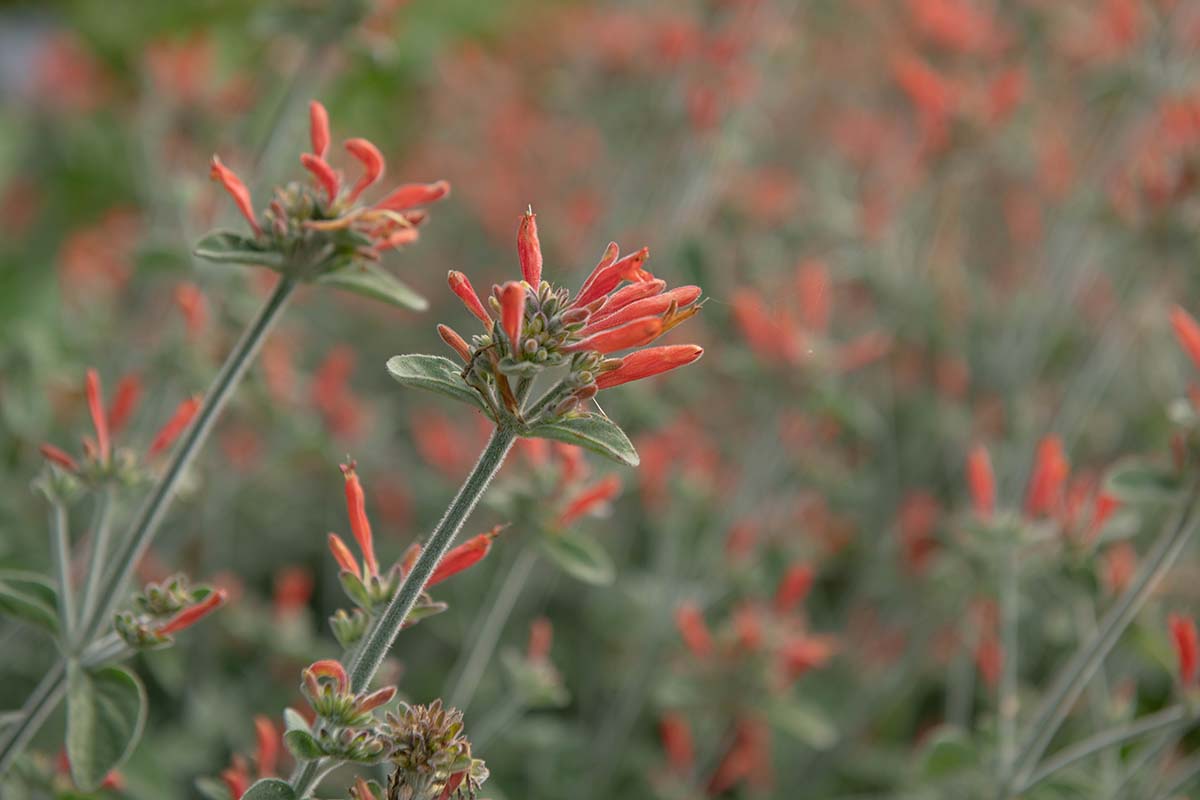
Good things come to those who increase their garden’s biodiversity in style, and by implementing D. squarrosa into your landscape, the coming of good things is practically guaranteed.
Any remarks, questions, or fun hummingbird facts can go in the comments section below!
Interested in other flowering pollinator magnets? Then draw near to these guides:
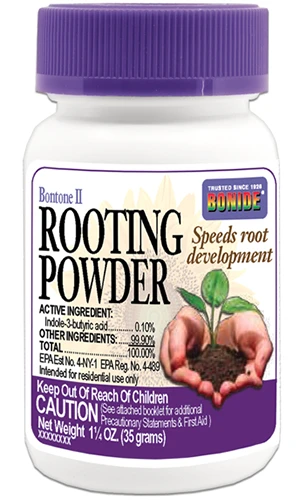

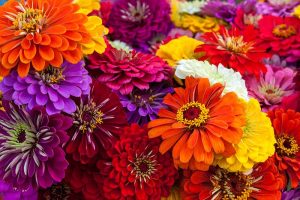
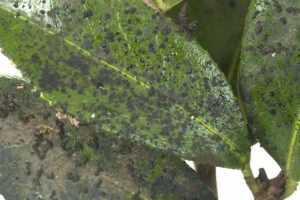
I can’t find anyone who sells this plant. I live in Canada
These can be hard to find, Janice! We suggest contacting nurseries in your area to see if they can source plants for you.